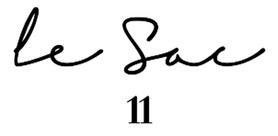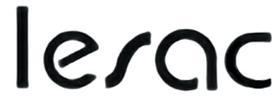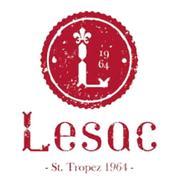Four and oh…
Charlotte Wilding explains why Armani was left counting the cost despite a quartet of arguments. T-654/18, Giorgio Armani SpA v EUIPO, General Court, 26th March 2020

Giorgio Armani SpA (Armani) filed an EU trade mark registration for the figurative sign shown below in classes 18 and 25 on 29th December 2014.

Felipe Domingo Asunción opposed on the basis of a likelihood of confusion (under Article 8(1)(b) EUTMR) with his earlier Spanish registrations for LESAC in class 18, and in classes 25 and 35.
Armani put Asunción to proof of use, but the Opposition Division found genuine use in class 35, so the opposition was successful. Armani’s appeal was dismissed on 13th August 2018.
Armani then appealed to the General Court (GC) either to alter the decision by finding that the appeal was well-founded or to annul the decision. Armani’s first claim was dismissed because the power to alter a decision is provided only so that the GC can adopt the decision that the Board of Appeal (BoA) ought to have taken. As the BoA does not have the power to decide on the registrability of an application, neither can the GC.
Annulment claim

In support of its second claim, Armani argued four points:
- Infringement of Article 94(1) EUTMR due to the BoA having found, without giving the parties opportunity to comment, that the earlier trade mark had been put to genuine use in class 35.
- Infringement of Article 8(1)(b) EUTMR as regards the scope of protection in class 35. The EUIPO erred, it said, in finding that the services protected were “retail sales services in relation to handbags, purses and wallets made from leather, ready-made clothing and footwear” and not the broader term registered, “retail sales services”, for which Armani said there was no use.
- Infringement of Articles 18 and 47(2) EUTMR, as the evidence of use was not sufficient and that there were instances of use of a different mark.
- Infringement of Article 8(1)(b) EUTMR, regarding the existence of a likelihood of confusion among the relevant public.
Point by point

The first point was dismissed as the right to be heard under Article 94(1) EUTMR extends to factual and legal matters, not to the final position that the authority intends to adopt. The second was also dismissed, on the basis that the original specification was not too broad at the time of filing and it is appropriate to hold that use of a mark in respect of a limited range of retail services is sufficient to maintain the whole term.
As regards point three, the GC found the evidence of use sufficient. Further, it noted that “it must be borne in mind that graphic additions are a common practice in trade, in particular in the fashion sector, and tend to establish that the commercial exploitation of the mark in question is real”.
Armani argued that both the number 11 and knowledge of “le sac”, meaning “bag/garment” in French, were important factors in distinguishing the marks. However, the GC held that the Spanish public would not have sufficient knowledge of French. Also, the marks’ average to high degree of similarity, coupled with similarity between the goods/services, meant that there was a likelihood of confusion.
The appeal was dismissed and Armani was ordered to pay costs.
Key points
- Knowledge of a foreign language is not automatic and evidence that the relevant public would understand the terminology is needed
- Genuine use of a mark in respect of a restricted range of goods/services may be sufficient to maintain the broader term






